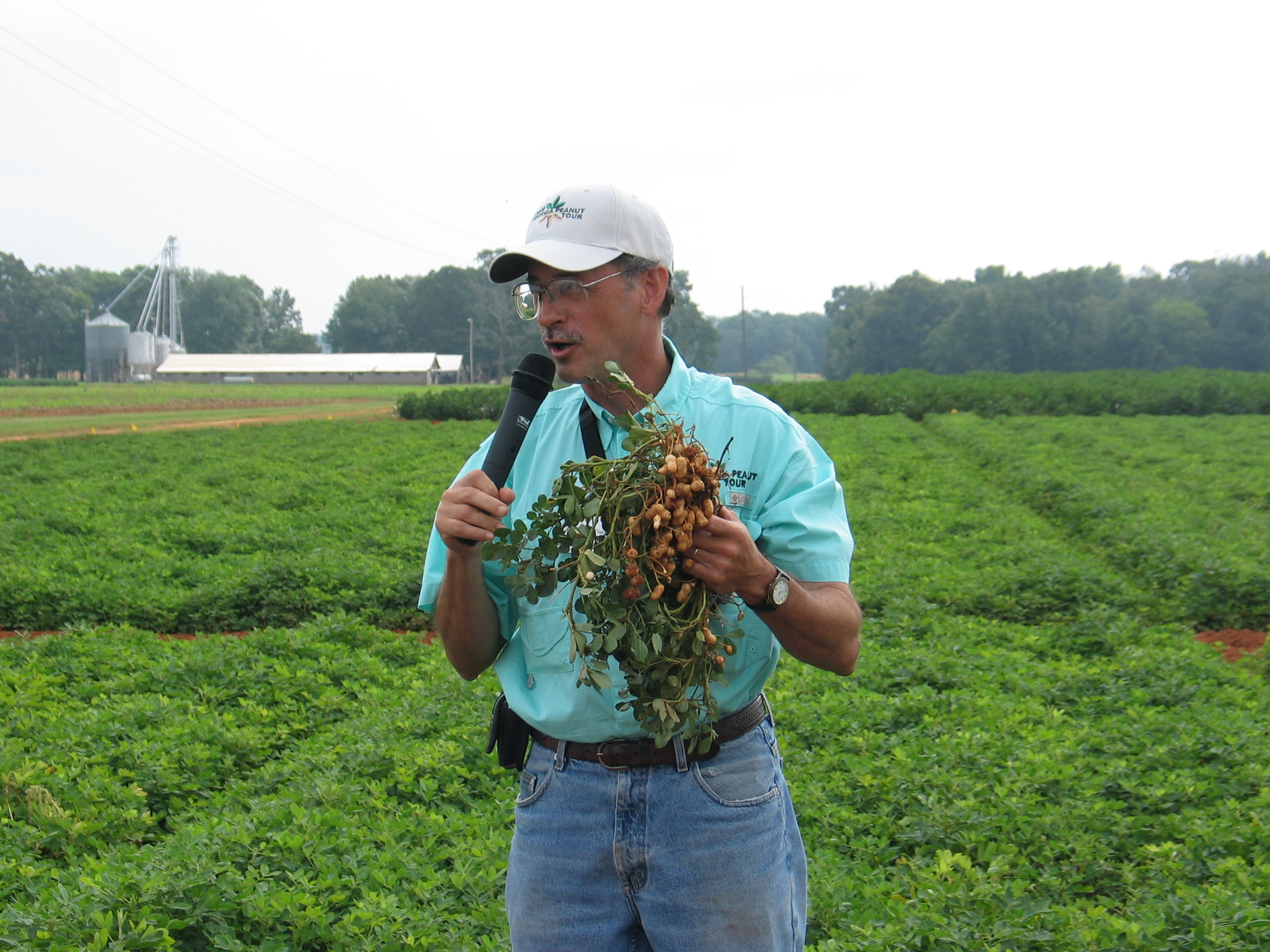 During the stop at the Southwest Georgia Research and Education Center, University of Georgia plant pathologist Tim Brenneman provided an update on soilborne diseases and a new method to use – spraying at night. One soilborne disease, Cylindrocladium black rot (CBR), got its start in Southwest Georgia in peanuts in 1965. CBR is one of those diseases that can be out in the soil all season long but farmers may not see the appearance of this disease until late in the season. Brenneman is researching at the center different approaches to deal with CBR. One of those is through genetic resistance. He is evaluating different peanut varieties for their resistance to CBR. One variety GA-02C has shown resistance to CBR and that is also another reason the variety was planted in the study by Jason Jackson on strip-till beds mentioned in an earlier post. Also, Brenneman is looking at the use of fungicides and new patterns or ways to improve the application process. With CBR it is necessary to wash the fungicide in with irrigation to move the fungicide down to the crown of the plant. Also, he is testing the use of in-furrow fungicide applications at planting. Another research project at the University of Georgia Tifton Campus looks at spraying peanuts at night to control disease such as white mold. At night the peanut leaves fold up and when sprayed the fungicide is able to get down to the soil line. He has also found that the fungicide residue lasts longer in the shade than in the open sun. With sprays at night the residue remains on the plant so in the morning when leaves open (like an umbrella) the canopy provides shade for the spray residue. Spraying at night has been very effective so far but this only marks the second full year of research so the University of Georgia Peanut Team is not recommending this as an official practice for farmers yet. There are also several grower trials throughout the state of Georgia looking at spraying at night to control white mold.
During the stop at the Southwest Georgia Research and Education Center, University of Georgia plant pathologist Tim Brenneman provided an update on soilborne diseases and a new method to use – spraying at night. One soilborne disease, Cylindrocladium black rot (CBR), got its start in Southwest Georgia in peanuts in 1965. CBR is one of those diseases that can be out in the soil all season long but farmers may not see the appearance of this disease until late in the season. Brenneman is researching at the center different approaches to deal with CBR. One of those is through genetic resistance. He is evaluating different peanut varieties for their resistance to CBR. One variety GA-02C has shown resistance to CBR and that is also another reason the variety was planted in the study by Jason Jackson on strip-till beds mentioned in an earlier post. Also, Brenneman is looking at the use of fungicides and new patterns or ways to improve the application process. With CBR it is necessary to wash the fungicide in with irrigation to move the fungicide down to the crown of the plant. Also, he is testing the use of in-furrow fungicide applications at planting. Another research project at the University of Georgia Tifton Campus looks at spraying peanuts at night to control disease such as white mold. At night the peanut leaves fold up and when sprayed the fungicide is able to get down to the soil line. He has also found that the fungicide residue lasts longer in the shade than in the open sun. With sprays at night the residue remains on the plant so in the morning when leaves open (like an umbrella) the canopy provides shade for the spray residue. Spraying at night has been very effective so far but this only marks the second full year of research so the University of Georgia Peanut Team is not recommending this as an official practice for farmers yet. There are also several grower trials throughout the state of Georgia looking at spraying at night to control white mold.
